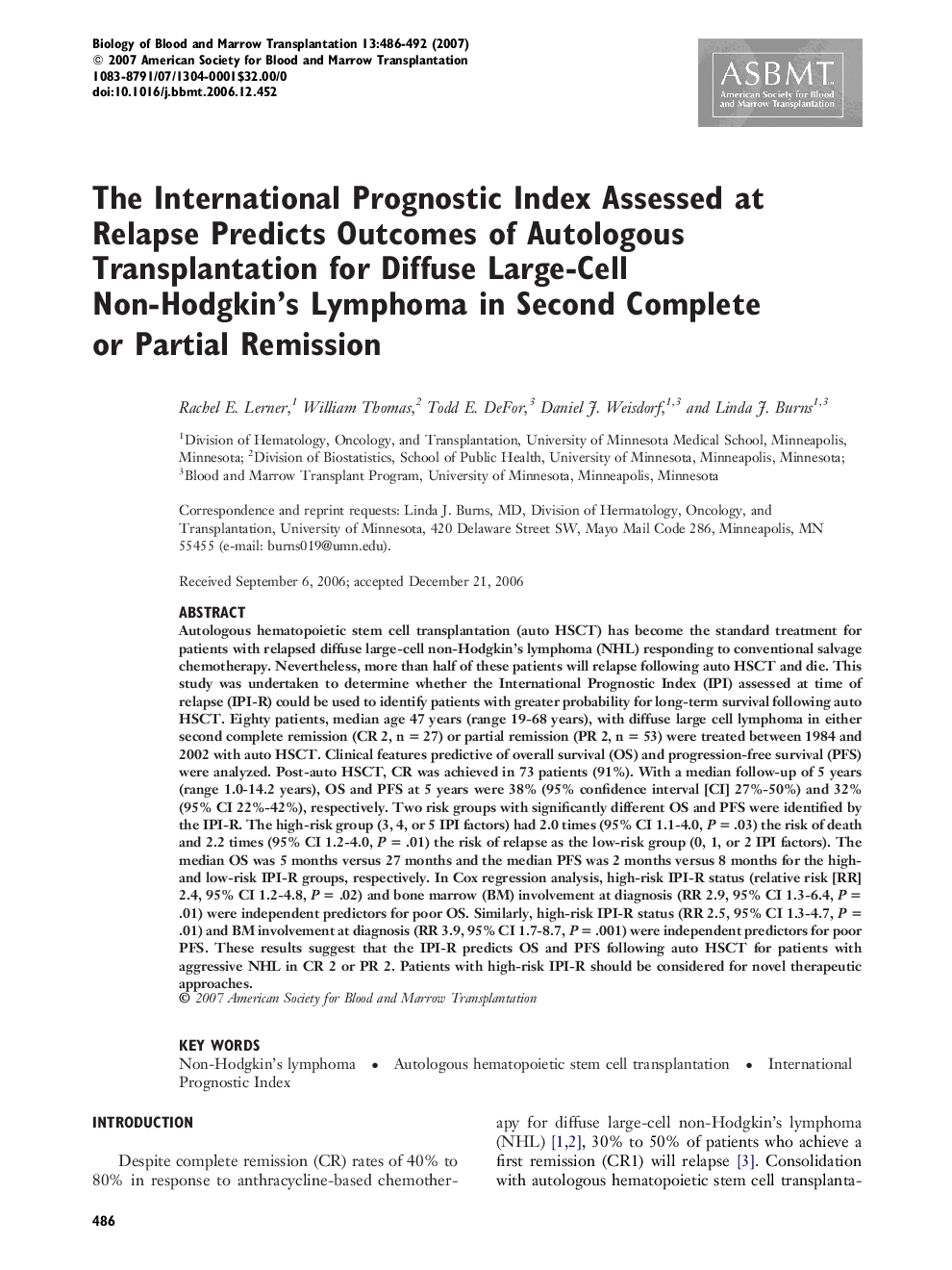| کد مقاله | کد نشریه | سال انتشار | مقاله انگلیسی | نسخه تمام متن |
|---|---|---|---|---|
| 2105037 | 1546379 | 2007 | 7 صفحه PDF | دانلود رایگان |

Autologous hematopoietic stem cell transplantation (auto HSCT) has become the standard treatment for patients with relapsed diffuse large-cell non-Hodgkin’s lymphoma (NHL) responding to conventional salvage chemotherapy. Nevertheless, more than half of these patients will relapse following auto HSCT and die. This study was undertaken to determine whether the International Prognostic Index (IPI) assessed at time of relapse (IPI-R) could be used to identify patients with greater probability for long-term survival following auto HSCT. Eighty patients, median age 47 years (range 19-68 years), with diffuse large cell lymphoma in either second complete remission (CR 2, n = 27) or partial remission (PR 2, n = 53) were treated between 1984 and 2002 with auto HSCT. Clinical features predictive of overall survival (OS) and progression-free survival (PFS) were analyzed. Post-auto HSCT, CR was achieved in 73 patients (91%). With a median follow-up of 5 years (range 1.0-14.2 years), OS and PFS at 5 years were 38% (95% confidence interval [CI] 27%-50%) and 32% (95% CI 22%-42%), respectively. Two risk groups with significantly different OS and PFS were identified by the IPI-R. The high-risk group (3, 4, or 5 IPI factors) had 2.0 times (95% CI 1.1-4.0, P = .03) the risk of death and 2.2 times (95% CI 1.2-4.0, P = .01) the risk of relapse as the low-risk group (0, 1, or 2 IPI factors). The median OS was 5 months versus 27 months and the median PFS was 2 months versus 8 months for the high- and low-risk IPI-R groups, respectively. In Cox regression analysis, high-risk IPI-R status (relative risk [RR] 2.4, 95% CI 1.2-4.8, P = .02) and bone marrow (BM) involvement at diagnosis (RR 2.9, 95% CI 1.3-6.4, P = .01) were independent predictors for poor OS. Similarly, high-risk IPI-R status (RR 2.5, 95% CI 1.3-4.7, P = .01) and BM involvement at diagnosis (RR 3.9, 95% CI 1.7-8.7, P = .001) were independent predictors for poor PFS. These results suggest that the IPI-R predicts OS and PFS following auto HSCT for patients with aggressive NHL in CR 2 or PR 2. Patients with high-risk IPI-R should be considered for novel therapeutic approaches.
Journal: - Volume 13, Issue 4, April 2007, Pages 486–492